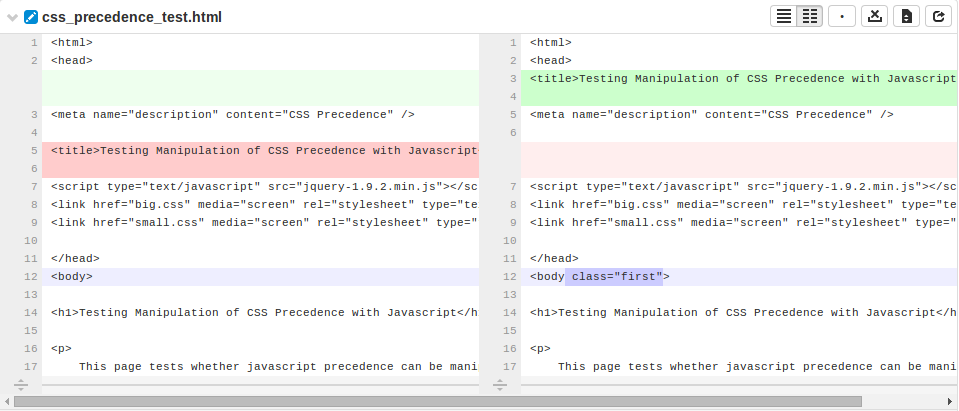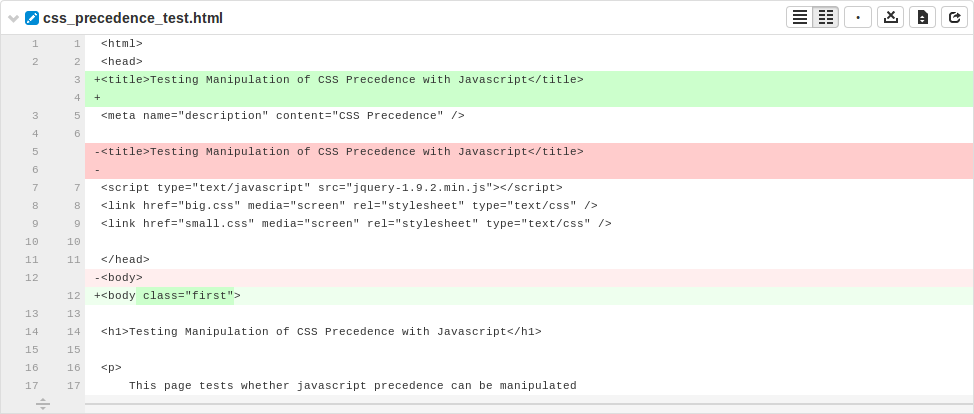
When you view a changelist or code review, the associated files are presented as diffs, short for differences, showing you how they have changed.

The first row of buttons above the files allow you to (left to right):

Each file is presented with an icon indicating whether the file was:
The file's presentation can be controlled with (left to right):

Mark as Read button, displayed only for code reviews, helps you (and others) keep track of which files have been reviewed. This is particularly useful when a code review consists of many files.
When clicked, the button's colors invert and the associated file is visually muted, to make it easy to distinguish read files from unread files:

If a file has been marked as read, click the button a second time to reset the status to unread.
If the file has comments associated, its entry shows a comments exist icon ![]() .
.
When you view a diff, the changes are highlighted:

The diff presentation displays a concise view of where changes are made within a file, showing the changed lines and only a few lines before and after each revision. Sometimes, this concise view is insufficient to understand the context of the change. The Show Full Context displays the entire file, but this can be too much detail.
When there are more lines in a file, either above or below the currently displayed diff, a Show More Context row appears.

Clicking this row attempts to display 10 additional lines adjacent to the row (which may appear between two modifications), allowing up to 20 lines of additional context to be displayed. The row disappears when no additional content is available.
Comments may be presented within the body of a file and appear immediately below the line the commenter targeted for comment. See Comments for more details.

The comment(s) exist here icon ![]() appears in the line number column whenever comments exist. This is useful when the comment display is toggled off.
appears in the line number column whenever comments exist. This is useful when the comment display is toggled off.
When viewing a diff in-line, the line numbers for the old version are first, and the line numbers for the new version are second, followed by the file content. Some users find this view easier to use when locating an area that has changed, but then switch to side-by-side view to help them understand the change better. Swarm maintains the scroll position; you do not lose your place in the file after toggling the diff view.

Press n on your keyboard to scroll to the next changed area within a file. Press p to scroll to the previous change.
When a diff contains multiple files, the changes may be taller than your browser window. Swarm keeps the per-file toolbar in view for each file as you scroll, so that you can continue to identify the file at the top of the screen and control its presentation.
